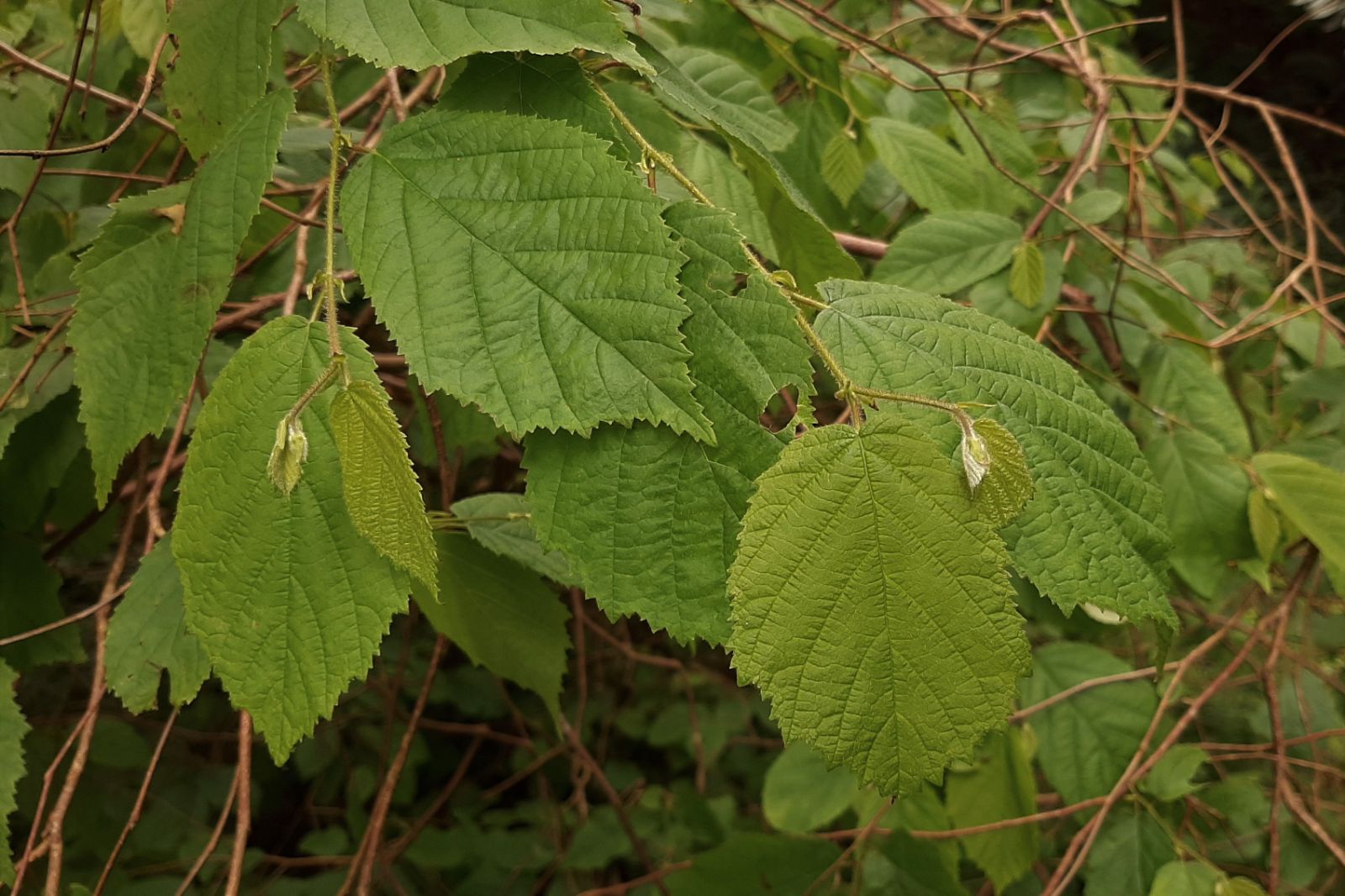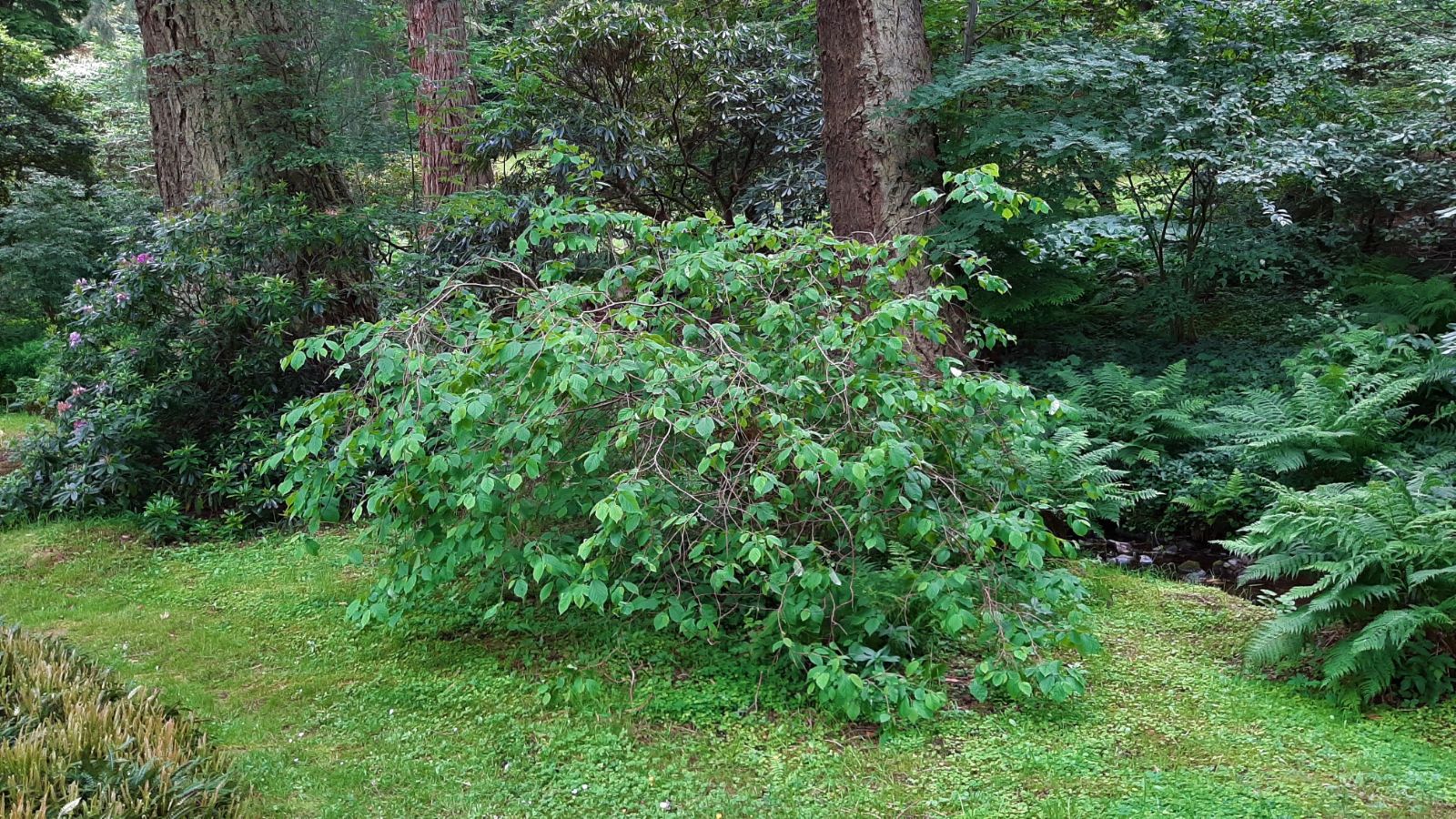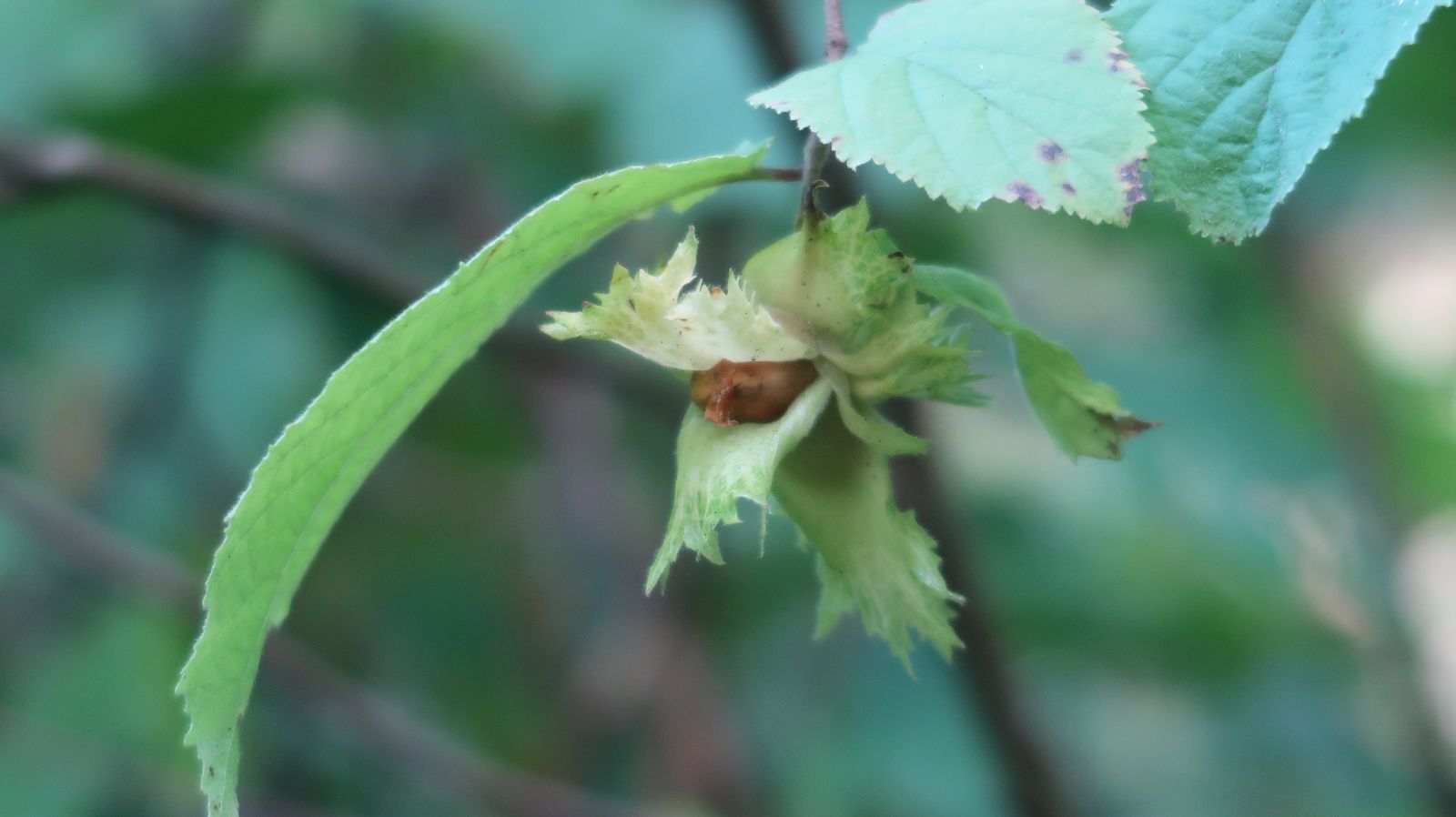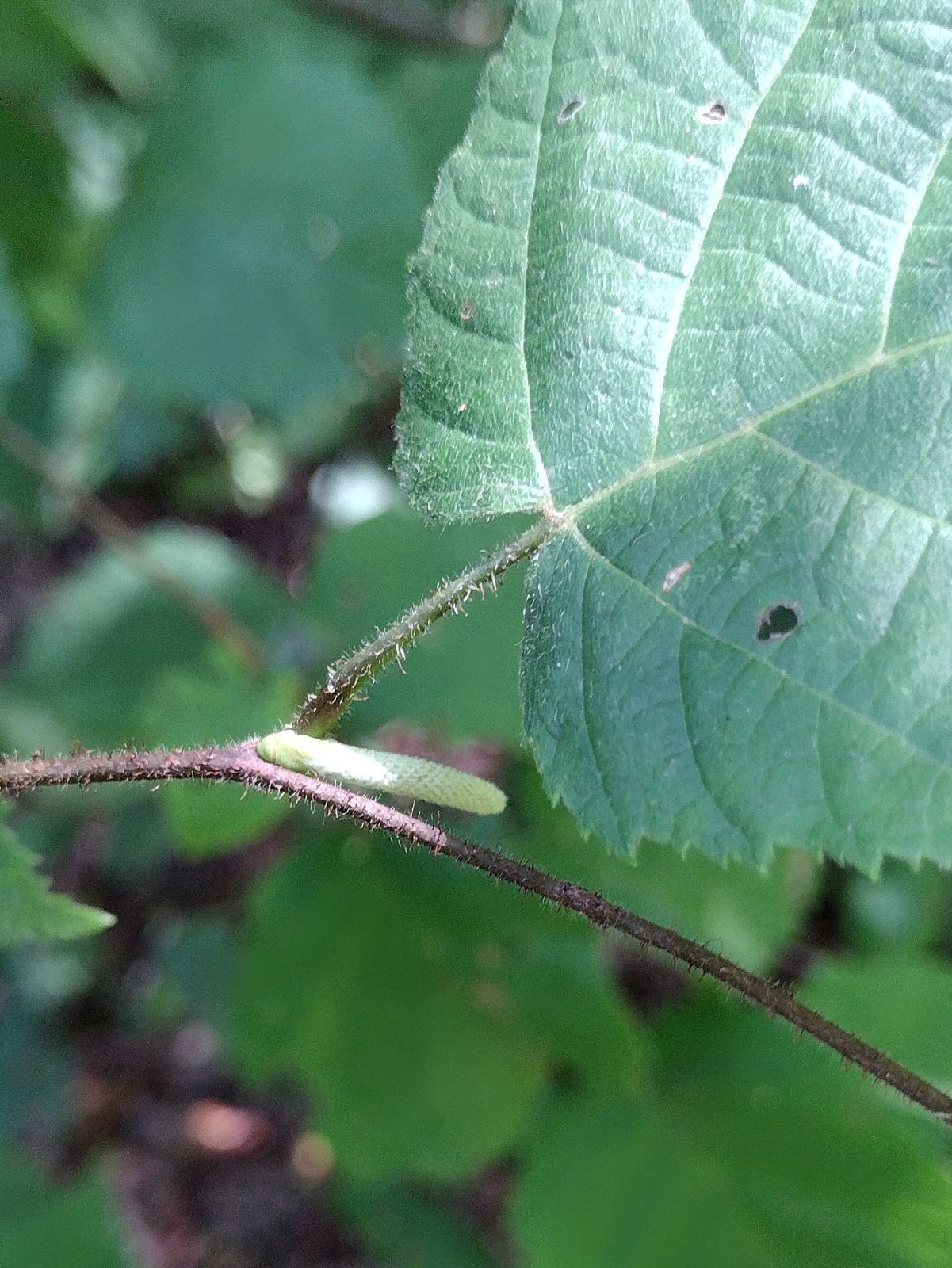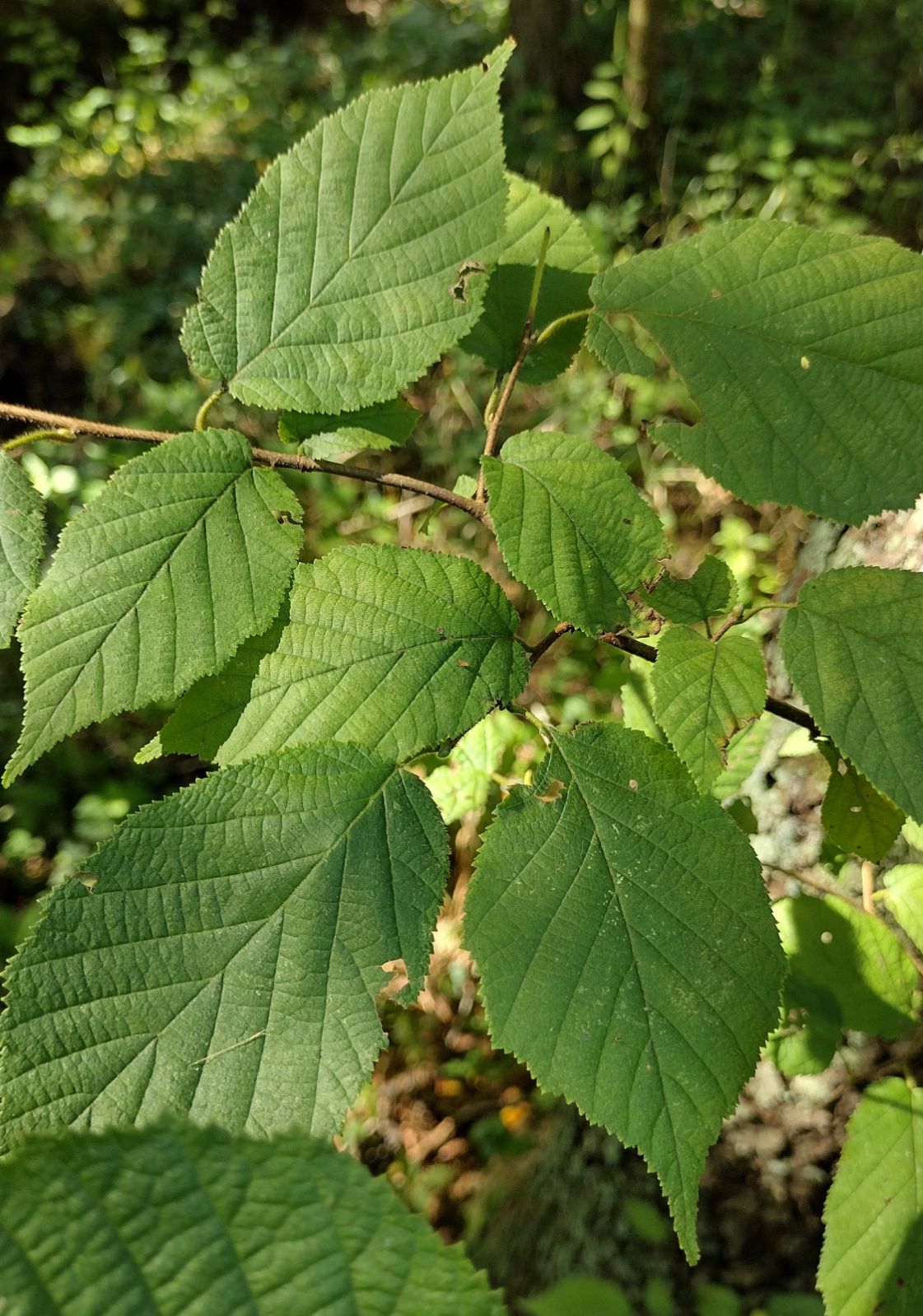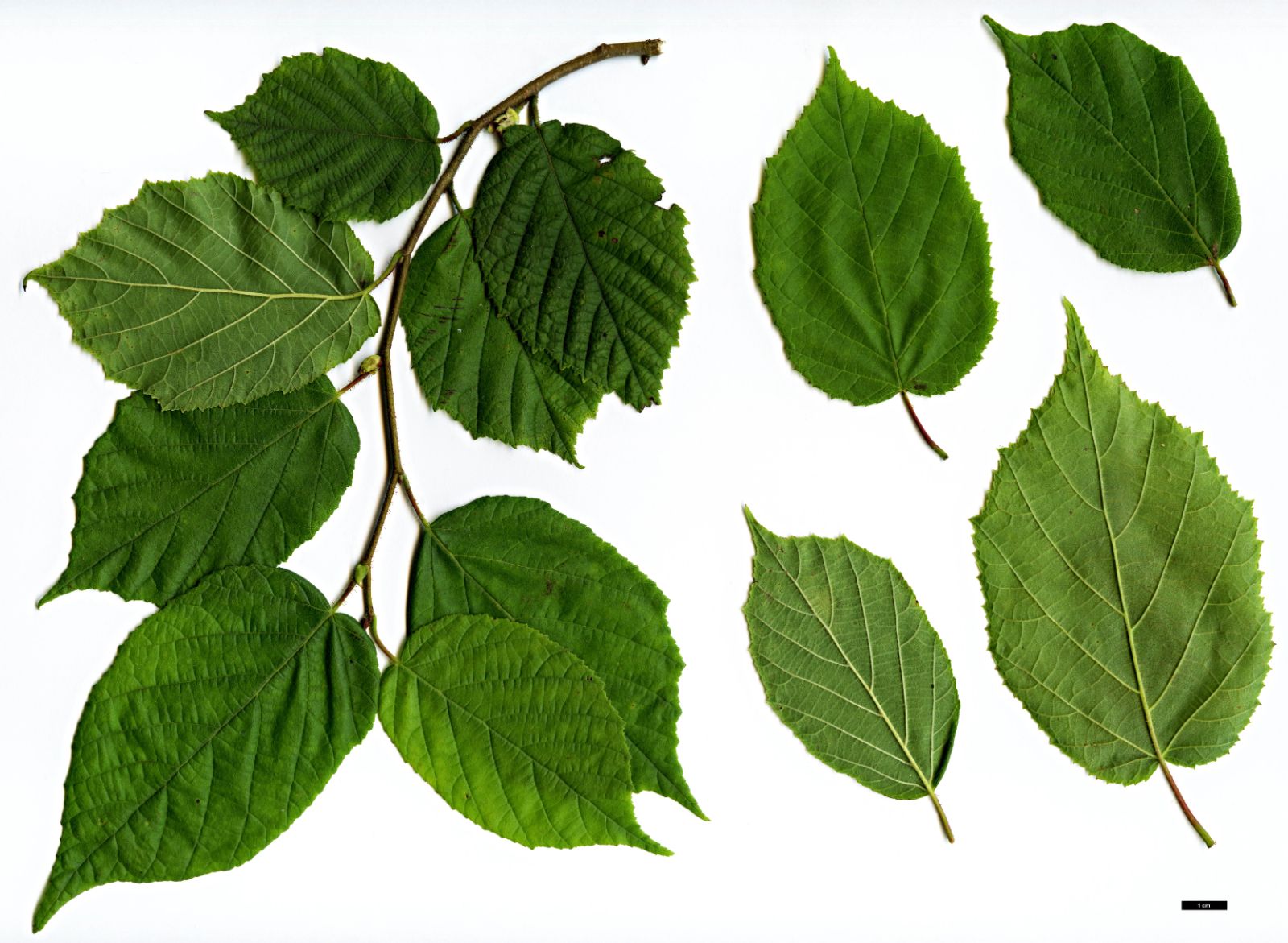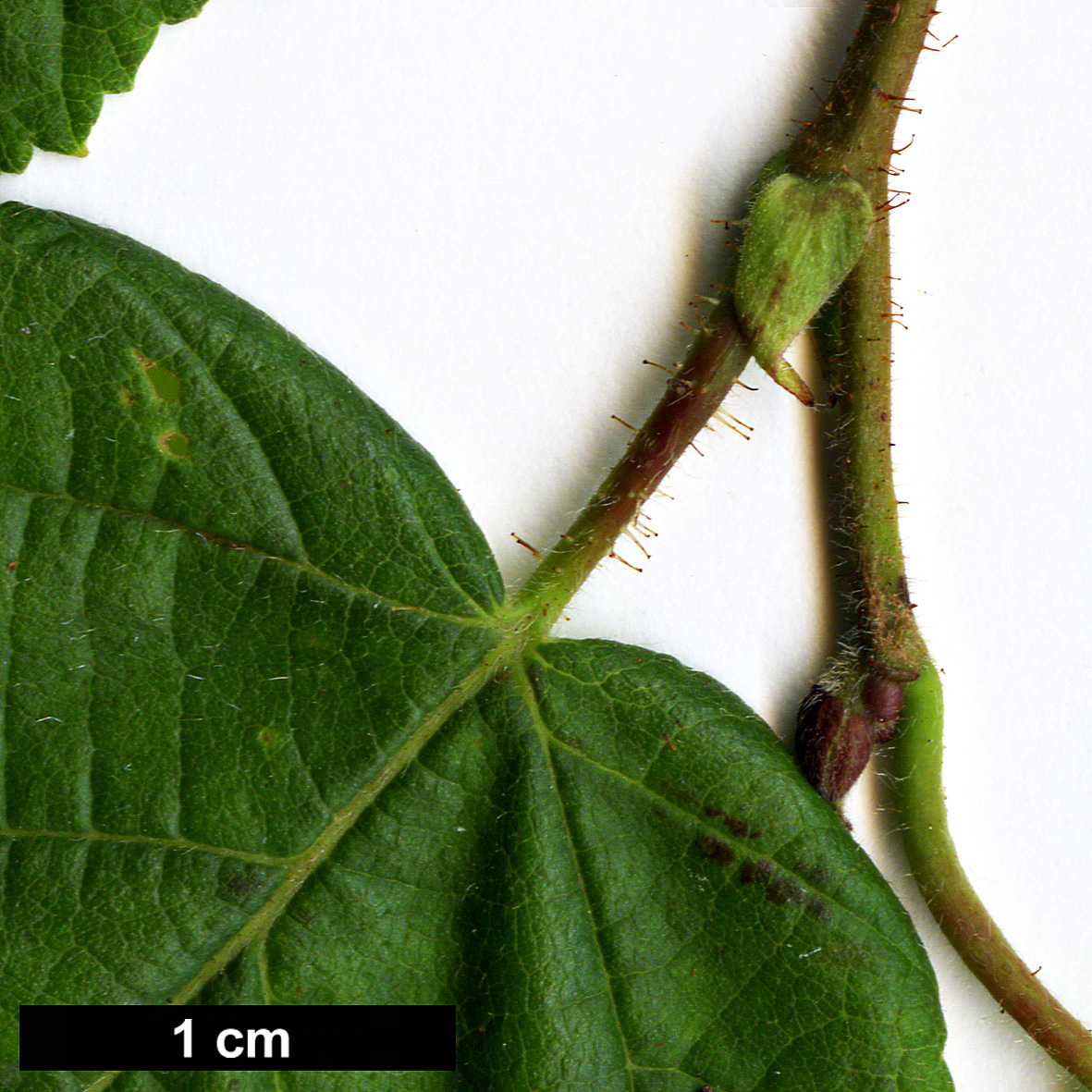Corylus americana
Sponsor
Kindly sponsored by
Kent Men of The Trees
Credits
Owen Johnson & Richard Moore (2023)
Recommended citation
Johnson, O. & Moore, R. (2023), 'Corylus americana' from the website Trees and Shrubs Online (treesandshrubsonline.
Genus
Common Names
- American Hazel
- Noisetier d'Amérique
Synonyms
- Corylus americana var. altior Farwell
- Corylus americana var. indehiscens E. J. Palmer & Steyermark
- Corylus americana var. missouriensis A. de Candolle
Infraspecifics
Other taxa in genus
- Corylus americana × avellana
- Corylus avellana
- Corylus avellana × cornuta
- Corylus avellana × heterophylla
- Corylus avellana × maxima
- Corylus avellana × sieboldiana
- Corylus avellana × sutchuenensis
- Corylus Badgersett Hybrids
- Corylus chinensis
- Corylus colchica
- Corylus colurna
- Corylus × colurnoides
- Corylus cornuta
- Corylus fargesii
- Corylus ferox
- Corylus 'Grand Traverse'
- Corylus heterophylla
- Corylus jacquemontii
- Corylus maxima
- Corylus 'Purple Haze'
- Corylus 'Rosita'
- Corylus 'Ruby'
- Corylus sieboldiana
- Corylus × spinescens
- Corylus sutchuenensis
- Corylus 'Te Terra Red'
- Corylus × vilmorinii
- Corylus yunnanensis
A many-stemmed shrub to 3(–5) m, self-coppicing or suckering. Bark pale grey, smooth. Young twigs with rather stiff gland-tipped hairs. Leaf 5–16 × 4–12 cm, suborbicular, shouldered, base narrowly cordate to narrowly rounded, sides often straight, tip abruptly acuminate to long-acuminate; margin sharply serrate, or doubly serrate, or obscurely lobulate; sparsely pubescent above and more densely so beneath; petiole 5–13 mm, densely glandular-pubescent. Male catkins single or paired, 4–8 cm long, with short (1–5 mm) peduncles. Nuts in clusters of 2–5, small (each c. 12 mm long); husks bell-like, yellow-green, glandular-pubescent, broad and slightly longer than the nut or up to twice as long; upper margin deeply and irregularly toothed or lobed, and pleated. (Furlow 1997; Bean 1981).
Distribution Canada Manitoba, Ontario, Quebec, Saskatchewan. United States Alabama, Arkansas, Connecticut, Delaware, Georgia, Illinois, Indiana, Iowa, Kansas, Kentucky, Louisiana, Maine, Maryland, Massachusetts, Michigan, Minnesota, Mississippi, Missouri, Nebraska, New Hampshire, New Jersey, New York, North Carolina, North Dakota, Ohio, Oklahoma, Pennsylvania, Rhode Island, South Carolina, South Dakota, Tennessee, Vermont, Virginia, West Virginia, Wisconsin.
Habitat Open woods and thickets; waste ground.
USDA Hardiness Zone 4
RHS Hardiness Rating H6
Conservation status Least concern (LC)
Corylus americana is the common hazel species across large parts of the eastern United States. In leaf it is hardly distinguishable from the equivalent European species, C. avellana; its male catkins, produced very early in spring, have shorter stalks (1–5 mm rather than 5–12 mm), and the nuts, ripening through the end of summer, are equally tasty but rather smaller (c. 12 mm rather than c. 18 mm). The husks of the American plant are more elaborate – indeed showy – being much lobed and ruffled and always longer than the nut itself.
These two species also differ subtly in their ecology: Corylus avellana – native to a region more species-depleted after the last Ice Age – is typically a more abundant plant, even a co-dominant one, and can become a 15 m tree. C. americana is slightly less of a woodland species, being usually absent from old-growth forest communities and characteristic of the ecotone from forest to prairie (in Nebraska in particular); it is quick to invade waste land and was one of the first bushes to colonise after the last glaciation (Nomad Seed Project 2019; USDA 2023). It is very much a shrub, seldom passing five metres in height and developing thickets of small stems from below ground level – rather than from the root-crown as is true for C. avellana. This suckering habit helps its resprout after forest fires, but its ecology is much less fire dependent than that of the other ‘American hazel’, C. cornuta, and severe fires can kill the shallow root-system (USDA 2023). It is able to grow in very low light levels inside woods, but fruits best in full sun (Nomad Seed Project 2019).
The nut’s smaller size meant that Corylus americana quickly lost out in popularity among European settlers to cultivars derived from the Old World hazels, although the latter are readily killed by Eastern Filbert Blight (EFB) to which C. americana, as the natural host species, is largely immune, suffering minor cankers at worst. Both species produce straight, flexible poles which have many uses in basketry and fencing, but in the American plant these poles are never of much length. Native Americans used a herbal broth made from the bark of Corylus americana to treat hives and fevers, and a poultice to help wounds and sores to heal (Plants for a Future 2023; Nomad Seed Project 2019).
The American hazel’s qualities do not lend it to garden use. Even its autumn colour, in a biome where so many trees excel, is variable and only sometimes includes good orange and red tints (Dirr 2009). In cultivation in Europe, it is the kind of plant which only botanic gardens are likely to grow: Dawyck Botanic Garden in southern Scotland has a 1981 accession from Ontario, and the Sir Harold Hillier Gardens in England has a 1998 accession from Maryland (Royal Botanic Garden Edinburgh 2023). More surprisingly, three bushes about four metres high were a feature of the Val de la Mare Arboretum on Jersey in 2013 (Tree Register 2023), though it has to be admitted that plantings such as this are very likely to be overlooked once the label drops off. This is a tough plant, and is successfully cultivated at the Linnaean Gardens of Uppsala University in Sweden (Royal Botanic Garden Edinburgh 2023).
'Little Filly'
A dwarf sport with smaller leaves, found as a seedling in 2008 by Dr Jessica Lubell of the University of Connecticut and only 60 cm tall after six years (Lubell 2014).
'Littlepage'
Synonyms / alternative names
Corylus americana 'Little Page'
A selection made for nut production, used in the middle decades of the twentieth century for hybrid breeding (Molnar 2011) but perhaps no longer in commerce.
'Purpleleaf Bailey Select'
Reddish purple young leaves with unusually incised margins slowly fade to green, and turn burgundy in autumn; partly self-fertile and free-fruiting (Bailey Nurseries 2023; Nature Hills 2023). Selected by Bailey Nurseries by 2005 (Dirr 2009). (For a similar plant which may be of hybrid origin and apparently does not fruit, see Corylus ‘Purple Haze’.)
'Rush'
‘Rush’ was selected in 1917 from the local wild population by J.F. Jones in Lancaster, Pennsylvania, for its high yield and unusually large nuts (Molnar 2011). Lancaster’s aim was to cross American and European hazelnuts in the search for a hardy commercial plant which was resistant to Eastern Filbert Blight, and the subsequent adoption of ‘Rush’ in University of Oregon’s hazelnut breeding programme has made it one of the parents of nearly all the newer American fruiting selections (USDA 2016). ‘Rush’ has itself also been quite widely grown as nut tree (Duke 1989), but is vulnerable to attack by hazelnut mites (Molnar 2011).
'Sun Harvest'
A fruiting and ornamental selection marketed by Prides Corner Farms (Prides Corner Farms 2023) – one of rather few American suppliers for native Corylus americana.
'Winkler'
A mid-western selection with larger nuts, notable for being self-fertile (Talmadge 2021; Hatch 2021–2022); most hazelnut clones need another form nearby for them to produce nuts. ‘Winkler’ was once widely cultivated in the United States (Duke 1989).

